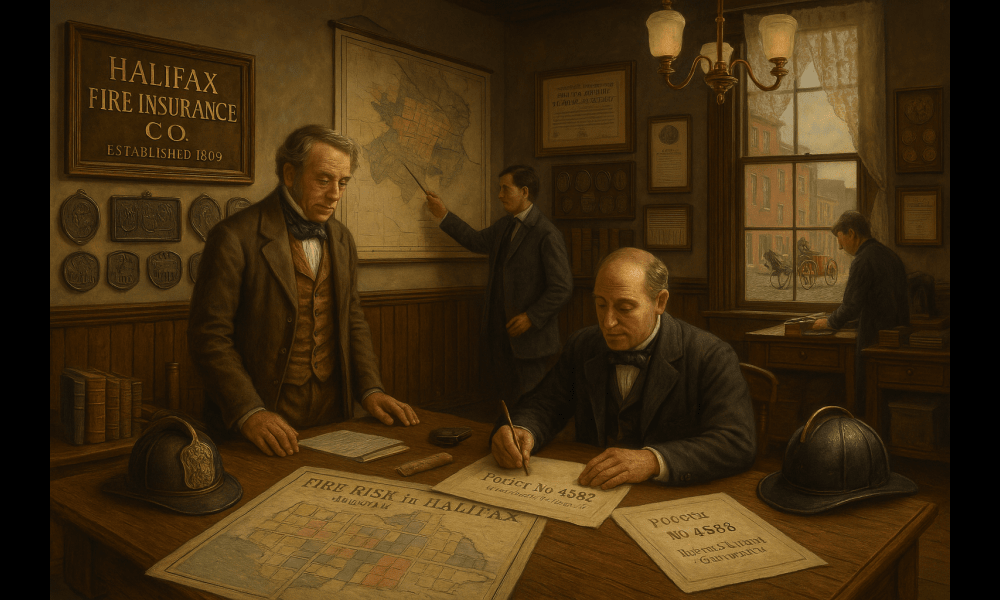Between 1789 and 1863, several fire insurance companies operated in Halifax, often in close relation to the volunteer fire companies and their development. These companies played a vital role in property protection and, by extension, in encouraging improvements in firefighting infrastructure. Here is a fact-based summary of fire insurance companies active during this period, based on the historical record:
Fire Insurance Companies in Halifax (1789–1863)
1. Halifax Fire Insurance Company
-
Established: 1809
-
Notable Support: This company was a key patron of the Hand in Hand Fire-Company, offering both financial backing and policy benefits to members.
-
Incentives:
-
Members of the Hand in Hand Fire-Company received preferential insurance rates.
-
The company encouraged the growth of organized firefighting as a risk mitigation strategy.
-
2. Ætna Insurance Company
-
Presence in Halifax: Active by the mid-1800s.
-
Notable Event: In 1850, Ætna gifted £10 to the Union Engine Company in appreciation for their efforts during a relatively fire-free year. This sparked some public debate, as many felt the Axe Fire Company deserved equal or greater recognition for their hazardous duties.
3. British American Assurance Company
-
Active: Mid-1800s
-
Offices in Halifax: Regularly advertised in local papers.
-
This company underwrote numerous commercial buildings, including mills and warehouses.
4. Halifax Marine and General Insurance Company
-
Founded: 1830s
-
While originally more focused on marine insurance, it expanded to include fire insurance policies as demand for urban property protection grew.
-
Known for issuing combined policies covering shipping warehouses near the Halifax waterfront.
5. Phoenix Fire Insurance Company
-
British-based, but had agents in Halifax as early as the 1840s.
-
This company’s name occasionally caused confusion with the Phœnix Fire-Company (1789–1853), which was a volunteer firefighting group—not an insurer.
Observations and Impact
-
Mutual Benefit Ties: Several fire companies were directly supported by, or had preferential insurance arrangements with, insurers. This mutual reinforcement promoted both better fire response and increased policy uptake.
-
Engine House Improvements: Insurers were among the stakeholders pushing for improved engine houses, fire plugs, and cisterns, especially in the 1850s, when wooden buildings and tar roofs made Halifax highly flammable.
-
Public Recognition: Insurance firms occasionally issued public rewards to fire companies (e.g., post-fire commendations), both as a token of appreciation and to promote their own public image.
-
Rates and Risk: Fire insurance rates were heavily influenced by location, construction material, proximity to water, and distance from fire stations. Buildings near engine houses, for example, sometimes received reduced rates.


